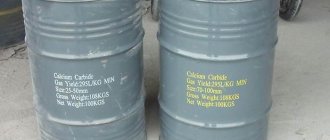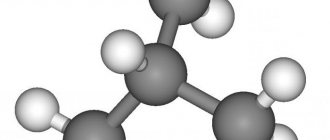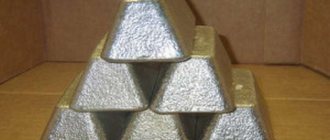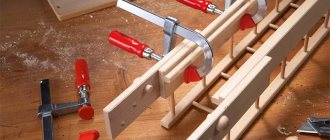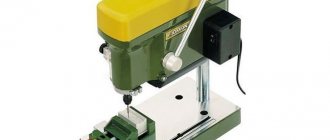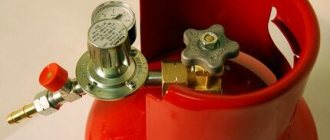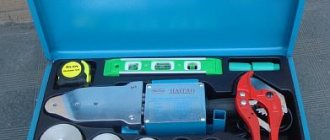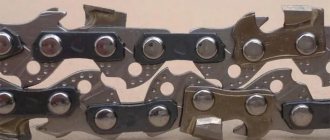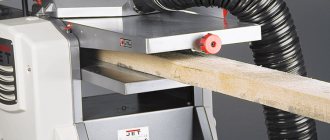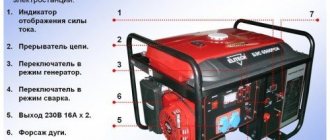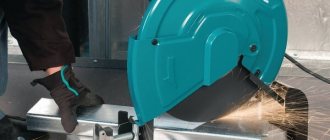It is difficult to name an industry that does not use metal and products made from it, for the production of which a rolling mill is actively used. Metallurgical enterprises today place quite high demands on equipment. That is why modern industrial machines, in particular rolling mills, differ significantly from the models that were produced earlier.
Rolling mill for the production of corrugated sheets
Why is this equipment needed?
The need for such a durable and reliable material as metal is constantly growing, which leads to the need to open new metallurgical enterprises and modernize existing ones. The list of industries in which metal simply cannot be used can be continued indefinitely. These are mechanical engineering, automobile and shipbuilding, construction and many others.
In order for metal ore to be turned into rolled metal of a certain grade, it is necessary to perform a lot of basic and auxiliary operations, for each of which special equipment is used. One of the main types of metallurgical equipment, which produces a sheet of metal as a result of plastic deformation from a hot billet, is a rolling mill. It is here that the bulk of the work carried out by metallurgical enterprises is carried out.
Types of rolling mills
As we have already found out, a rolling mill is equipment on which, through sequential operations, a metal billet is transformed into long products with the required geometric parameters. Depending on the parameters of the final product, these machines can be of several types. Billet and crimping (slabing and blooming) are designed to produce a billet from a large metal ingot, which is supplied for further processing to a special rolling device. The latter type of equipment, which already produces rolled metal of the required configuration, includes section, pipe and wire mills.
The category of section mills includes equipment for the production of various types of rolled products. Thus, these can be mills for the production of sheet steel, angles, channels, rails, etc. Depending on their functionality, such mills can be large- and medium-grade, rail-rolling and MPS category, on which profiles of various sections are produced. Sheet rolling mills, capable of processing workpieces by cold or hot forming, are used to produce metal plates (50–350 mm thick), sheet metal (3–50 mm) and strips (1.2–20 mm). After production, finished products are wound into rolls weighing up to 50 tons.
The classification of rolling mills that produce various types of seamless pipes divides them into the following categories:
- continuous extensions, which produce pipes with a cross-section of up to 110 mm;
- short straightening mills necessary for the production of pipes with a diameter of 60–450 mm;
- three-roll type equipment - for the production of thick-walled pipes with a diameter of 35–200 mm (pipes produced on such equipment are characterized by a reduced degree of wall thickness);
- pilgrim mills used for the production of seamless pipes of significant diameter (400–700 mm).
Rolling stand of a sheet rolling mill
Modern enterprises also use parts-rolling or special-type mills. They are used for the production of profile and pipe blanks, the length of which does not exceed 3 meters. In addition, the capabilities of such equipment make it possible to use it to produce workpieces in the form of balls, bent profiles, gears, screws, pipes with a ribbed section, etc. The workpieces are processed already at enterprises that use them to produce their products.
Features of the operation of rolling machines
Purpose
The equipment allows us to produce various types of products:
- Long products. These include rods and strips of various geometric shapes, as well as shaped parts, spring and rhombic.
- Special purpose profile. Metal products in the form of angles, channels, I-beams, as well as combined blanks with a variable cross-section.
- Rolled products in the form of thin sheets up to 4 mm, as well as thick sheets more than 4 mm.
- Pipe profile with connection using welding and seamless joints.
Design and principle of operation
The rolling press consists of three main parts:
- The cage is working. The design of these elements includes rolling rolls, installation plates, a base frame, and wiring.
- Electric motors for transmitting movement to working elements.
- Mechanisms of distribution and transformation of motion. Consists of a spindle, couplings and gears.
The units differ in the number of stands and work roll sizes:
- Machines for thick metal have up to two working compartments with rollers ranging from 3 m to 5.5 m in length. In addition, vertical rollers can be installed, which are used for processing side edges.
- Broadband equipment contains up to 15 stands, rolls have a length of up to 2.5 m.
- Universal rolling presses consist of 5 compartments, and the length of the shafts is up to 1.5 m.
In industry, there are three methods for processing metal raw materials until they acquire the required geometric shape:
- In the first case, a rolling device is installed on the casting unit, and the initial contour of the part is obtained until complete crystallization. The disadvantage of this method is the need to maintain a high temperature until the end of processing, as well as additional precise running-in.
- As a result of rolling through furnaces with temperatures inside the chamber up to 1350 C, the edges are independently welded. At the exit of the equipment, a finished pipe profile is obtained.
- The third method involves manufacturing parts at a workpiece temperature corresponding to the environment. To prevent defects, the units use a large number of rollers that rotate in the opposite direction.
Specifications
Rolling machines have characteristics that distinguish them from analogues:
- the type of profile produced in a particular installation can be pipe, section, as well as thin and thick sheet;
- the range of metal thickness intended for rolling is from 0.4 mm to 200 mm;
- necessary raw materials for rolling;
- performance indicator, the choice of machine before purchase, as well as the preparation of raw materials, depends on this factor;
- number of working cells with rolls for the required profile;
- the diameter of the working shafts for rolling, as well as their useful length;
- rated voltage - 220 V / 380 V;
- the power indicator of the electric motor used is from 2.2 kW and above;
- assembled installation dimensions;
- total weight of all equipment in the complex;
- presence of reversal in the rolling mill.
Varieties
Based on the number of rolls located in the working stand and their placement, rolling machines are divided into the following types:
- double-roll - the design has paired mechanisms for pressing, which can rotate in different directions;
- three-roll - contain three shafts in each stand;
- four-roll - consist of two pairs of working parts;
- multi-roll - have a design of 4 or more rolls, and in universal ones they are used in a vertical position, sometimes they are installed in the spaces between horizontal ones;
- rolls mounted at an angle to the surface of the metal workpiece.
Rolling presses are distinguished by the location of the stands:
- equipment with working mechanisms arranged in one line is called linear;
- in stepped installations, the stands are installed in several lines parallel to the main flow;
- equipment for continuous and semi-continuous rolling; with the help of such machines, industry achieves high productivity.
Depending on the type of product produced during the process of pressing blanks, installations are divided into the following types:
- Crimping equipment. Allows the production of steel ingots weighing up to 25 tons. A piece of square or rectangular cross-section comes out of the working stands.
- Continuous pressing machines for blank material. As a result of the operation of such mechanisms, steel plates are modified into a special profile and sheets.
- Rail and beam machines roll blooms into rails, channels and large beams. In industry, step and sequential mills are used.
- Sectional machines are used to produce metal parts of different grades.
- In the process of manufacturing wire, wire mills are installed in the workshop; they are divided into stepped, semi-continuous and continuous.
- Slabs are processed using a sheet rolling machine. Thick-sheet, wide-strip, and also with winders are used.
- Pipe rolling equipment produces seamless and welded pipes. During the rolling process, two levels of processing are used. Initially, a hollow sleeve is made from a round bar, then a pipe of the required diameter is made from it.
Selection principle
When purchasing equipment, pay attention to the following:
- Productivity of finished products, process automation, reliability and profile quality.
- The use of additional installations to ensure automatic rental.
Components of a rolling mill
The design of any rolling mill includes three main elements: the so-called working stands, transmission devices and drive motors. The rollers along which sheet or profile metal moves are part of the working stands. They also include installation mechanisms, frames, plates and wiring. The movement of all working parts of the rolling mill is provided by powerful electric motors, which are connected to them through elements of the transmission device: couplings, spindles and gears.
You should know that the main characteristic of billet and crimping rolling mills is the diameter of the work roll. If, in the process of processing a workpiece, several working stands are used at once, then the diameter of the roll on which the finishing operation is performed is used as such a characteristic.
A section rolling mill, where products of complex shapes and with fairly accurate geometric parameters are produced, includes several stands at once through which the rolled stock passes sequentially during its processing.
Modern enterprises today use universal rolling mills equipped with 3 or 5 working stands. Some of the rolls of such mills (2–3) have a diameter of 1350 mm, the rest - 800 mm. Equipment for producing sheet metal of considerable thickness is, as a rule, equipped with one or two working stands. The working width of such mills, determined by the length of the rolls, is in the range of 3.5–5.5 meters. A sheet metal mill is most often equipped with additional working stands with vertical rolls, which ensure compression of the side edges of the formed sheet of metal. Sheet metal in the form of strips is produced in a device equipped with 10–15 working stands equipped with horizontal rolls with a length of 1.5–2.5 meters and vertical rolls for crimping the ends.
A rolling mill, as can be seen from its design, can be of considerable length. The most notable thing in this regard is pipe rolling equipment, which includes three mills simultaneously. At the first of them, a hole is pierced in a metal workpiece, at the second, the workpiece is drawn into a pipe, and at the third, calibration is performed, which is carried out to give the finished product the required diameter. On part rolling mills, the workpiece is subjected to both helical and transverse processing.
Rolling mill design
Working stands and their drives
Main equipment of rolling mills
The working cage of a rolling mill consists of two cast frames, connected at the top by traverses; at the bottom, each frame rests with its feet on plates, which are attached to the foundation with anchor bolts (Fig. 1).
The main technological tool of a rolling mill is work rolls; to adjust their position, the stands are equipped with pressing mechanisms, balancing devices and axial installation and fixing mechanisms. At the entrance and exit from the working stand, tables with rulers guiding the workpiece are attached to the frames. Devices that protect against overloads are installed under the pressure mechanisms.
There are 2-roll (duo), 3- (trio), 4- (quarto), and multi-roll working stands, reversible and non-reversible. Working stands of wheel-rolling, bandage-rolling, ball-rolling, axis-rolling and other special-purpose mills are not considered in this training manual.
They try to design the working stand as less metal-intensive as possible to lighten the entire structure of the rolling mill and save material, but at the same time as rigid as possible to improve the quality of the rolled metal produced. Increasing the overall rigidity of the working stand by enlarging the cross sections of all parts that bear the load during rolling does not always lead to achieving the stated goal. Thus, with an increase in the diameter of the work roll, its rigidity increases and the deflection during rolling decreases, but at the same time the roll barrel is more flattened from contact with the rolled metal.
Listed below are options for simultaneously changing the diameter of the work roll barrel and the cross-sectional area of the bed stand, allowing you to achieve the greatest rigidity of the stand
Diameter of the work roll barrel, %……………… 100; 120; 156; 120
Cross section of the frame stand, %………100; 100; 100; 120
Working cage rigidity, % ……………………. 100; 111; 117; 115
Weight of the working cage, %……………………….. 100; 122; 148; 136
Calculated values of the relative stiffness of the stand depending on the ratio of the length and diameter of the barrel for different values of the ratio of the product of the length of the barrel by the length of the upper cross member of the frame to the area of the upper cross member of the frame show that the maximum stiffness of the stand is achieved at = 1.4 (Fig. 2).
The rigidity of the stand also increases with increasing ratio of the journal diameter to the barrel diameter of the work roll. Thus, when using fluid friction bearings (FLB) without a tapered axle bushing, the subsidence of the roll barrel is reduced by 3.0 - 3.5 times at the ratio . Further increase does not provide a significant reduction in deformations.
The rigidity of the working stand can be increased immediately by 25...30% (without increasing its mass) if the upper and lower working rolls are pressed against each other with a force exceeding the rolling force. Then the preload will eliminate the gaps in the joints. It is advisable to use such prestressed stands (PSC) in finishing groups.
PNK is equipped with mechanisms for regulating the roll spacing according to the readings of the strip size meter, which sharply reduces the variation in thickness of rolled products.
For hot-rolled sheets with a thickness of 4...10 mm, the tolerance range according to the existing standard is 10...25% of the thickness. The use of high-speed pressing mechanisms with automatic roller spacing control systems makes it possible to reduce this field by 3 times, i.e. metal consumption for an equal area of sheets is reduced by 6%. Metal savings by reducing the positive tolerance range and using negative tolerances for small-grade profiles are 2%, and for medium-grade profiles - 1%.
For seamless pipes, the tolerance range for wall thickness reaches 12.5...15% of the nominal wall thickness. If this difference is halved, the metal savings will be 6.8%.
When rolling sheets with a width of more than 1000 mm, in order to reduce the transverse thickness variation and improve the flatness of the rolled product, the bed working stands are equipped with hydromechanical devices for forced bending of the working and support rolls. These devices, which create additional stress in the elements of the working stand, are turned on only after the front end of the strip is captured by the rolls and are turned off upon completion of rolling. Cages with hydromechanical devices for forced bending of rolls do not belong to the PNC class.
Frameless PNCs with a rigid brace of pads (Fig. 3) are widely used in section mills; they have approximately 3 times less weight and 4 times greater rigidity than non-tensioned frame stands.
Further improvement of PNKs is associated with the use of PZhT in them to absorb radial load, as well as hydrostatic thrust bearings to absorb axial load.
Hydrostatic thrust bearings have advantages over rolling bearings in terms of rigidity and reliability at high speeds. This achieves a much higher prestress. Thus, the radial rigidity of PNK 370 is approximately 7 times higher than that of frame stands. The use of hydrostatic thrust bearings allows the axial rigidity to be increased by 12 times.
The drive of a stand or several stands of a rolling mill, which rotates the work or support rolls, is called the main drive. It can be electric or hydraulic. Manual drives are used only in small machines for rolling tin, lead and other soft non-ferrous metals.
There are individual and group electric drives (Fig. 4).
With an individual electric drive, each work roll has its own electric motor (geared motor), but a system for synchronizing the rotation of the rolls is required. In the case of a group electric drive, one electric motor rotates all the rolls, but then a gear stand or gearbox is needed - a gear stand.
The operating mode of electric drives can be irreversible, reversible and periodic. The most common non-reversible mode
, in which each work roll rotates in only one direction.
The reverse operating mode
is that after passing the workpiece, each work roll changes the direction of its rotation to the opposite.
The peculiarity of the periodic operating mode
is that rolling of the workpiece by work rolls is not carried out in all its sections.
The design and calculation of the main electric drive begins after the working stand of the rolling mill has been designed and the speed, force and rolling torque have been calculated.
Roll units
Rotating work rolls, as the main technological tool of a rolling mill, plastically deform (compress) the metal of the workpiece, while they perceive the rolling force acting from the metal and transmit it to the bearing supports of the rolls. The quality of the finished steel depends on the quality of the work rolls, so their importance in the production of rolled metal is paramount.
A roll assembly, such as a quarto stand, includes work and support rolls mounted in bearings and chocks (Fig. 5).
The rolled sheet is compressed by work rolls, its thickness decreases, but at the same time the sheet is stretched in length. The work rolls have a relatively small diameter, and as a result, they can bend greatly during rolling, so they are supported by the support rolls.
There are solid and composite (banded) work rolls. The latter are a structure consisting of a steel axle and a wear-resistant material bandage applied to it.
Rolls can be smooth for rolling sheets and profiled (rolled sections), respectively, for rolling profiles. Each roll has a barrel, two necks, and one or two drive ends (Fig. 6).
The defining characteristic of the working stand is the dimensions of the working rolls - the diameter and length of the barrel. The barrel is the working part of the roll that deforms the rolled metal. There are streams on the barrel of the profiled roll. The nominal diameter of the barrel is the main parameter of the rolls of section rolling mills. The diameters of the barrels are selected taking into account the permissible angle of grip of the rolled workpiece (strip) by the work rolls; when rolling long metal.
The diameter of the barrel along the bottom of the stream must satisfy the following condition
,
where is the compression of the rolled workpiece.
The ratio of the nominal diameter of the barrel to its diameter along the bottom of the stream is taken to be no more than 1.4 in order to avoid too much reduction in accuracy. The ratio of the barrel length to its nominal diameter is 2.2...3.0 for the roughing stand and 1.2...2.0 for the finishing stand. In order to increase the rigidity of the cages, the lowest possible ratio values are taken. The final length of the barrel is determined based on the most optimal placement of the streams.
The shape of the stream on the barrel of the profiled work roll corresponds to the shape of the rolled product. Calibers formed by streams can be divided into two large groups according to their shape: simple and shaped. Shaped gauges include box, square, rhombic, hexagonal, oval, ribbed oval, round, etc. In addition, gauges can be open or closed. If the parting line of the rolls passes through the gauge, it is called open,
if the parting line is outside the caliber -
closed
(Fig. 7).
The barrels of the work rolls are periodically sharpened. In this case, multiple surface defects that impair the quality of rolled products are removed, and the original dimensions of the strands are restored in profiled rolls.
To hold the strip or sheet from axial movement, special roll profiles are used. For example, when hot rolling thin sheets on a quarto mill, the work rolls are made concave up to 0.5 mm, and the support rolls are made cylindrical. When cold rolling thin sheets, on the contrary, the rolls are made convex. However, these and any other profiling must ensure not only the correct position of the rolled material in the rolls during deformation, but also a minimum transverse thickness difference.
The neck is the supporting part of the roll on which the bearing is mounted. They try to make it as large in diameter as possible in order to increase the strength of the roll and distribute the rolling force over a larger area. The journals are not only cylindrical for rolling bearings or for plain bearings with textolite liners, but also conical for PZhT.
The diameter of the journal for a sliding bearing with textolite liners, which do not withstand high pressures during rolling, is selected as follows:
,
and the diameter of the journal for the rolling bearing is from the following series: 140, 150, 160, 170, 180, 190, 200, 220, 240, 260, 280, 300, 320, 340, 360, 380, 400, 420, 440, 460 , 480, 500, 530, 560, 600, 630, 670, 710, 800, 850, 900, 950 mm.
The length of the neck is taken equal to its diameter, i.e. .
The drive end, in diameter and length, is the connecting part of the roll that connects it to the electric drive. The diameter of the drive end is usually 10...15 mm less than the diameter of the neck.
The drive end can have keyways, flats and splines, and be either round or square in cross-section. Often the driving end is made in the form of a club or blade. The club end of the work roll is connected to the spindle using a roller coupling, and the blade end with sliding liners itself acts as a hinge element, which eliminates the roller coupling. Compared to the bladed connection, the club connection has a big disadvantage: technological difficulties in making clubs.
Both steel and cast iron are used to make work rolls. For hot rolling, cast and forged steel rolls are produced, and for cold rolling - only forged ones. In the total number of hot rolling rolls, the share of forged steel rolls is about 20%, while the share of cast (steel and cast iron) is 75...80%. Cast rolls are cheaper than forged ones, easier to manufacture, but less durable.
The use of tires made of high-strength materials in composite rolls, the possibility of replacing worn tires when using the axle repeatedly, reduces metal consumption and provides a great economic effect. Composite rolls with cast iron tires and steel axles have proven themselves well in operation.
After assigning the main geometric dimensions, the work roll is calculated for strength and elastic deformation due to the rolling force from the workpiece metal and torque from the drive.
Example 1. Calculate the strength and rigidity of a smooth work roll of a duo mill with barrel and neck dimensions , , if the sheet being rolled has a width of , and the intensity of the rolling force (load) uniformly distributed over the width of the sheet is equal to (Fig. 8). The magnitude of the torque applied to the drive end of the work roll during rolling is also known.
Solution. Under the influence of the rolling force, the smooth work roll bends, which can lead to defects (different thicknesses), especially when rolling thin sheets.
The design diagram of the roll is a 2-support beam AB
with a load uniformly distributed “across a rectangle”, which can be replaced by a concentrated rolling force applied in the middle of the beam. The lines of action of the reactions of the bearing supports applied at points and pass through the middle of the width of the bearings and coincide with the axes of the pressure screws.
The work roll barrel is designed for bending, neglecting tangential stresses from the torque, and a diagram of bending moments is constructed.
The maximum bending moment will be in the middle (dangerous) section along the length of the roll barrel:
.
Condition for the strength of the roll barrel according to normal bending stresses:
,
that is, the maximum normal stress that occurs during bending in a dangerous section of the roll barrel should not exceed the permissible normal stress in the same section, taken on the basis of a five-fold safety factor, where is the strength limit of the roll material. Depending on the material, the values of the permissible stresses are taken from those presented in the table. 1.
Table 1
Results obtained when testing specimens for tension-compression
| Work roll material | , MPa | , MPa |
| Forged alloy steel | 140…150 | 700…750 |
| Forged carbon steel | 120…130 | 600…650 |
| Cast carbon steel | 100…120 | 500…600 |
| Alloy cast iron | 80…100 | 400…500 |
| Cast iron | 70…80 | 350…400 |
The roll neck is designed for the combined action of bending and torque moments. The maximum bending moment in the roll neck will be in the dangerous section, where the neck passes into the barrel:
.
The maximum normal stress arising in the dangerous section of the roll neck during bending is
,
where is the moment of resistance of the dangerous section of the roll neck to bending.
The maximum shear stress arising in the dangerous section of the roll neck during torsion is
,
where is the moment of resistance of the dangerous section of the roll neck to torsion (polar moment).
The neck strength condition for steel rolls is written on the basis of the fourth (energy) theory of strength: the resulting stress should not exceed the permissible stress (see Table 1)
.
The neck strength condition for cast iron rolls is written based on Mohr’s theory of limit states:
.
The drive end of the work roll is designed only for the action of torque (Table 2).
table 2
Shapes of drive ends of work rolls
| Name | Sketch | Formula for calculating torsion |
| Clubs | ||
| Blade |
Note: MPa is the stress generated at the end of the work roll;
, MPa - permissible tangential stress; — driving end shape factor; — size according to the flats of the drive end
In all cases, the maximum tangential stresses arising from the application of torque to the end of the work roll should not exceed the permissible tangential stresses (see Table 1).
Next, the elastic deformation of the work roll is calculated.
In the strength of materials, the deflection of an elastic beam is determined using the Maxwell–Mohr theorem or Castigliano’s theorem. According to A.I. Tselikov, the greatest deflection in the middle of the work roll is determined by summing the deflection from the action of bending moments and the deflection from the action of transverse forces:
(1)
where is the Young's modulus and the modulus of elasticity of the work roll material in shear, for steel rolls MPa, MPa, for alloy cast iron rolls MPa, MPa, is the moment of inertia of the cross-sectional area of the roll barrel, , is the moment of inertia of the cross-sectional area of the roll neck, .
During cold rolling, the greatest deflection of the roll is allowed, and during hot rolling - .
Example 2. Calculate the strength and rigidity of a profiled work roll of a section mill with the dimensions of a barrel , and a neck , rolling a workpiece of round cross-section (Fig. 9). The rolling force and the magnitude of the torque applied to the drive end of the work roll are known.
Solution. The design diagram of a profiled roll is a 2-support beam, loaded with a concentrated rolling force, which is applied in the middle of the pass at a distance from the axis of one of the pressure screws. This distance varies depending on the caliber of rolling. The support reactions at points and are not the same in magnitude: . If there are several grooves on the roll barrel, it is necessary to find the rolling forces and check the strength of the roll in each gauge by calculation.
Maximum bending moment in the roll barrel when rolling in the corresponding caliber
.
Maximum bending moment at the roll neck
.
The most unfavorable case with regard to the strength of the roll neck is rolling in the extreme gauge from the drive end of the roll, when the roll neck is subject to bending and torsion simultaneously with the highest values of force factors.
Otherwise, the test calculation of the strength of a long section roll is similar to the calculation of the strength of a smooth sheet roll of a duo mill (see example 1).
Determining the elastic deformation of section rolls comes down to establishing the size of the gauge opening, i.e. opening the gauge and increasing its dimensions in the direction of the line of action of the rolling force. The opening of the gauge is determined by the deflection values of the rolls due to the action of bending moments and transverse forces. Knowledge of the elastic deformation of rolls is necessary to establish the gap between the roll collars when setting up the stand. The gap between the roll collars must be greater than the elastic deformation of the stand and the wear of the rolls.
The formula for determining the deflection of the roll when rolling a workpiece in a groove is obtained based on the Maxwell-Mohr theorem:
where is the area of the dangerous section of the roll neck, ; is the area of the dangerous section of the roll barrel along the bottom of the stream, .
When the rolling force is the same in all calibers, we can use formula (1), assuming that rolling is carried out in the middle caliber (this is the most unfavorable case of rolling in terms of the strength and rigidity of the roll). Then the roll deflection
The opening of the gauge due to elastic deformation of the two rolls is equal to . Below is the dependence of the total deflection of two rolls on the ratio for rolls with dimensions , when rolling in a medium gauge, when the rolling force = 0.6 MN (Fig. 10).
Thus, work rolls are first calculated for strength, rigidity, as well as fatigue life, after which sliding or rolling bearings are selected for them, and the dimensions of the bearings in the radial direction in the plane of action of the loads, and, consequently, the load capacity is limited by the distance between the roll necks .
Plain bearings
They are structurally of two types: closed and open.
Closed type sliding bearings, PZhT, are the most widely used in rolling. At any speed of rotation of the work roll and rolling forces, an oil film is always maintained between the neck of the work roll and the bearing, due to which the roll neck seems to float in the oil layer of the bearing. The state of liquid friction is ensured by the tightness of the bearing unit design with the surfaces of the rubbing parts processed to a mirror shine. The coefficient of friction in PVT is very small (0.001...0.005), there is practically no wear of rubbing surfaces, the service life of PVT is 10 ... 20 years. These figures are significantly higher than those of roller bearings. In addition, PZhT are able to withstand high specific pressures and maintain high accuracy at high rolling speeds.
Rolling mills also use open-type plain bearings with textolite or metal liners (Fig. 11).
Textolite consists of layers of cotton fabric impregnated with phenol-formaldehyde resin and hot pressed in molds.
Textolite bearings must be cooled so that they operate at temperatures no higher than 60...80, since at higher temperatures they begin to swell intensively and subsequently become charred.
Textolite bearings are characterized by an extremely low friction coefficient (10 - 20 times less than bronze), which at high rotation speeds is almost equal to the friction coefficient of roller bearings. The friction coefficient of bronze bearings is 0.06...0.10; roller - 0.002... 0.005; textolite - 0.004...0.006.
The main liners are installed in accordance with the direction of the rolling force. An additional liner is provided under the neck of the upper roll to absorb its mass during idle. In the bearings of the lower roll, there are no liners above the journals: the journals are covered from above with a protective casing.
The textolite liner can be manufactured either separately or together with the flange as a single unit (Fig. 12).
The main disadvantage of textolite bearings is their low rigidity, which makes it difficult to set up the mill and obtain rolled products of the required accuracy.
Rolling bearings
can be ball, roller or needle; Double-row spherical rolling bearings and four-row roller bearings are often used as roller supports. To absorb axial loads, angular contact rolling bearings are installed at one or two ends of the roll.
When designing rolling mills, rolling bearings are selected from standard ones using conditional formulas. Below is the methodology for selecting bearings adopted by domestic standards and the International Organization for Standardization (ISO).
The main characteristic of a bearing is its dynamic load capacity, which depends on the material, dimensions and design of the bearing and is empirically related to the service life of the bearing:
— for ball bearings;
- for roller bearings.
where is resource (durability), million revolutions; – equivalent load on the bearing.
There is a distinction between the selection of bearings based on dynamic load capacity to prevent fatigue failure (chipping) and static load capacity to prevent residual deformations.
When choosing a bearing size for given operating conditions, the following factors must be taken into account: magnitude and direction of load (radial, axial or combined); nature of the load (constant, variable, vibration or shock); rotation speed of the inner ring of the bearing; required durability, expressed in hours or millions of revolutions; temperature, humidity and dustiness of the environment, etc.
The selection of a bearing is carried out in the following sequence: first, the type is identified, the standard size of the bearing is determined that satisfies the magnitude and direction of the acting loads, the rotation speed and the required service life, and then the accuracy class of the bearing is assigned, taking into account the special requirements for the rotation accuracy of the unit. If there are none, the normal accuracy class is accepted.
Then, taking into account the required service life, the required dynamic load capacity is calculated, after which the bearing size and overall dimensions are specified from the catalogue.
The calculation and selection of bearings for rolling roll supports has its own characteristics. The radial load from the rolling force is taken by the main bearing, and the axial load by the auxiliary bearing. The main bearing is usually four-row with tapered or cylindrical rollers, and the auxiliary bearing is angular contact or thrust. If several identical uniformly loaded bearings are installed in a unit, then its dynamic load capacity is determined as follows:
— for ball bearings;
- for roller bearings,
where is the number of bearings.
The design of bearing units is subject to the following requirements: convenience and speed of assembly and disassembly of the unit; high radial and axial stiffness; fit parts without gaps. In addition, seals must be provided in the bearing units to prevent lubricant leakage.
